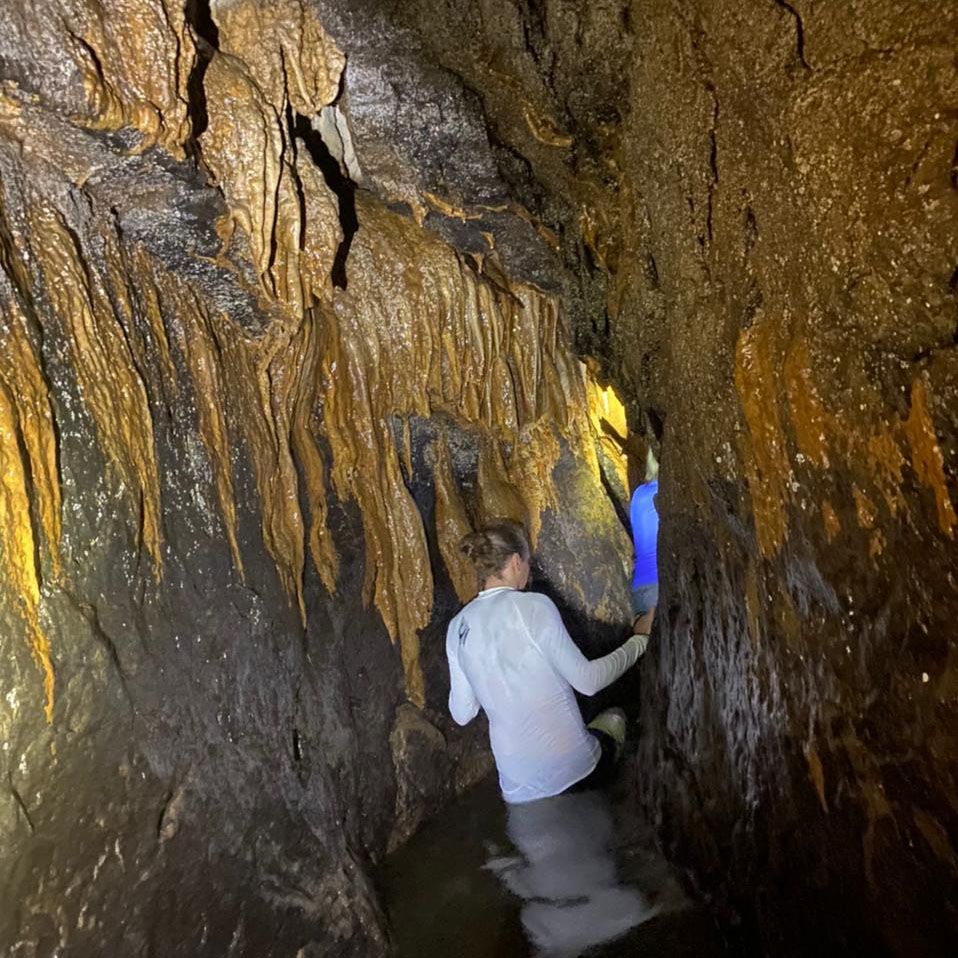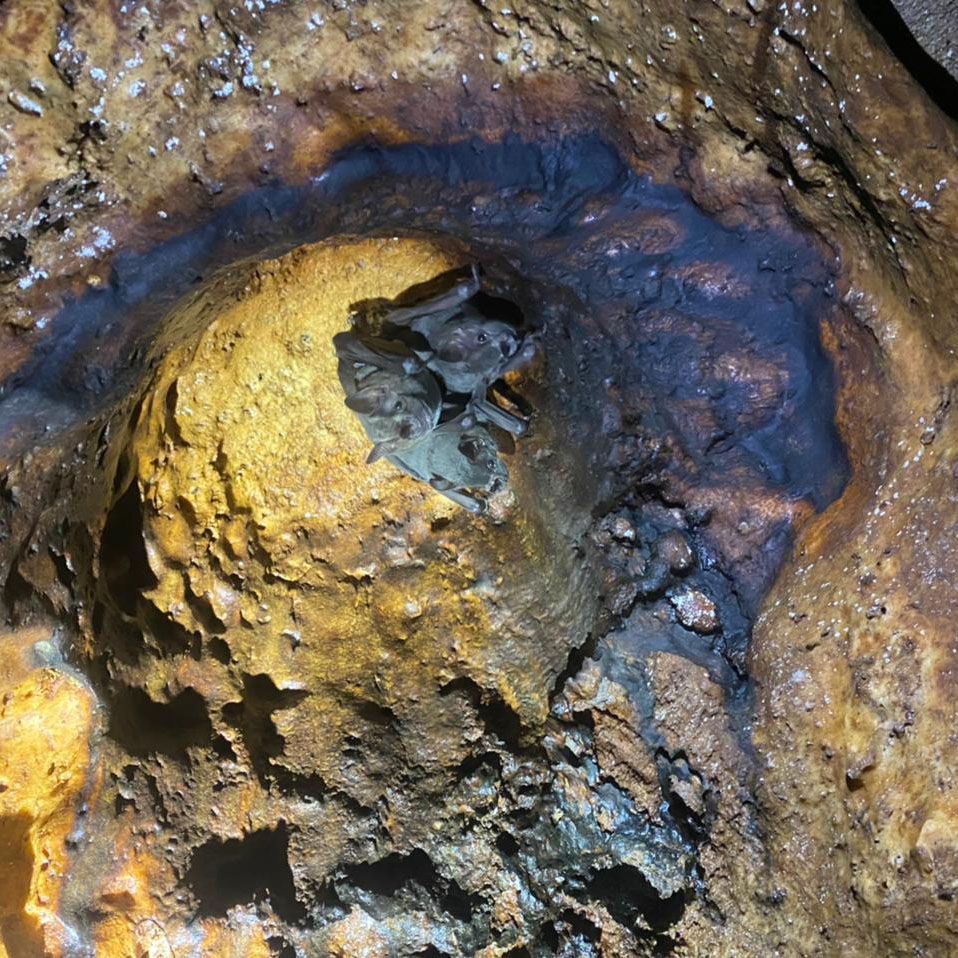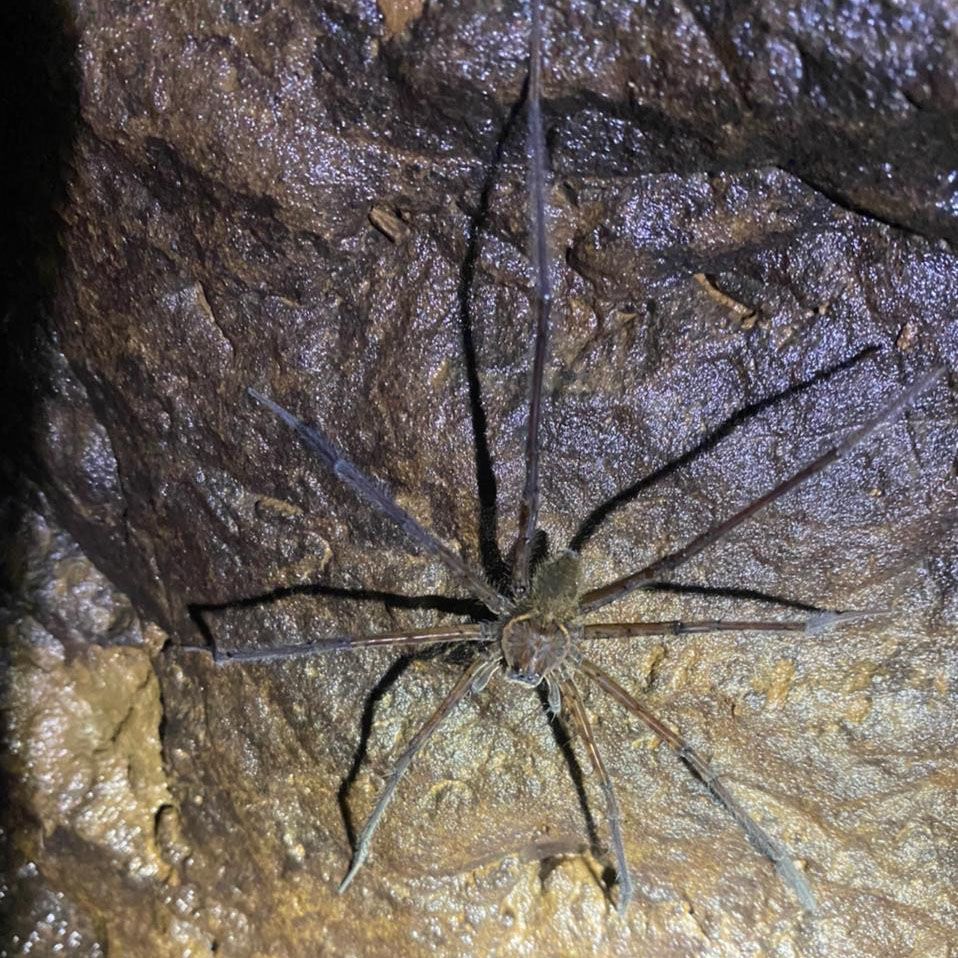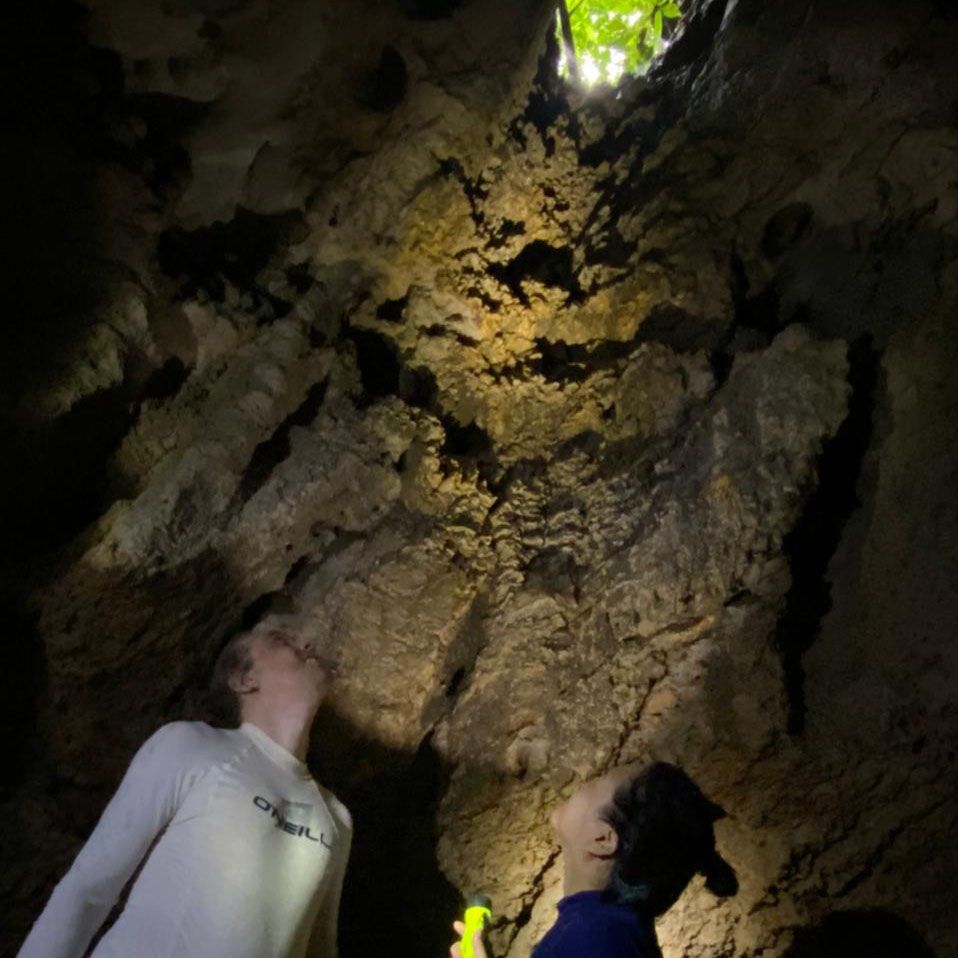Published January-30-2023
Rare Bat Cave Tour Teaches Unexpected Natural History Lesson
Walking through Cueva Nívida reminds us of the region's geological history, showing us the transformation this part of the Earth has undergone over the years. The Isla Bastimentos Marine National Park shelters several precious jewels; Nívida is one of the most recommended attractions in the Bocas del Toro archipelago. We will see a cave and combine various activities and learn more about the area's natural history.

Hugo Santa Cruz

Nívida in the native Ngäbe-Buglé language means bat. The Nívida cave is located in the center-west of the Isla Bastimentos Marine National Park and is guarded by some indigenous families. The park is next to Tranquilo Bay, yet, the entrance to this attraction is on the opposite side of the island.
After a journey of twenty minutes by motorboat, we arrive at Bahía Honda. We slip into kayaks in this bay and move silently through the mangroves. Using kayaks will allow us to observe and appreciate the birds and other animals we find on the route.
During the first half of the kayaking, we pass through mangroves. It is possible to see kingfishers, shorebirds, oropendolas, warblers, and herons, among other birds, and hundreds of crabs. Around the middle of the route, we transition from mangroves to the tropical rainforest. In this area of adjoining wetlands, some trees have adapted to saltwater, such as the Hug gum Tree, Orey, and Raphia Palm. We also see coconut and banana plantations along the stream belonging to the resident Ngäbe-Buglé families.
After paddling for about half an hour, we arrive at the beginning of the path that leads us to Cueva Nívida. The walk is short but filled with surprises like heliconias guarded by hummingbirds such as the Rufous-tailed Hummingbird, the Crowned Woodnymph, and even some hermits. It is possible to see poisonous frogs such as the Strawberry Poison Dart Frog in its orange variation with white fingers. This frog can have more than 30 different morphs and about 150 color variants (ask your guide if you want to see more variations of this same species). There is also the Lovely Poison Dart Frog, which, as its name indicates, is charming with its bright and colorful lines and spots.
Finally, after about twenty minutes of walking, we arrive at the mouth of the cave. Within a few meters of entering, we see hundreds of bats of various species on the cave ceiling, none of which are dangerous. These bats can be nectarivores, frugivorous, or insectivorous, so they perform essential functions in the ecosystem, such as pollination, seed dispersal, and pest control.

Within the first steps inside the cave, we will feel the water on our feet, which will vary in depth throughout the tour, reaching up to our chests (5ft) in some sections. But do not worry; the route is not complicated, it is short, and we do not walk more than 500ft. We observe various dark-world spiders and resident insects further into the cavern.

We see many stalactites and stalagmites formed by water erosion of the cave's limestone. Stalactites can take between 25 and 100 years to grow one centimeter, so that a two-meter stalactite could be as young as 20,000. But in reality, these limestone formations date back millions of years. Shark teeth fossils are sometimes found in the cave, falling off the walls as water erosion eats away at the limestone. According to the Smithsonian Tropical Research Institute, these fossils may be three to five million years old. At that time, this cavern (that we can walk today) was submerged in water. During the outcropping of the Panama tectonic plate, the Caribbean islands emerged. The first coral reefs developed in the area, which would later come to the surface and form this cavern.

The tour of the Cueva Nívida reminds us of the region's geological history, showing us the transformation this part of the Earth has undergone over the years. The Isla Bastimentos Marine National Park shelters several precious jewels; Nívida is one of the most recommended attractions in the Bocas del Toro archipelago. We will see a cave and combine various activities and learn more about the area's natural history.
